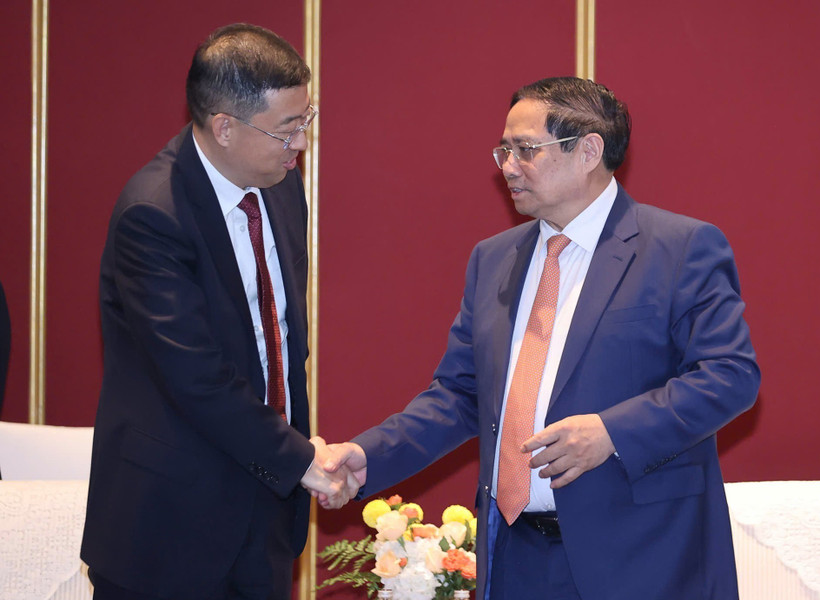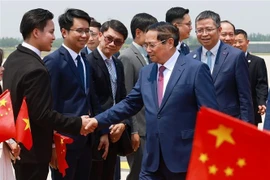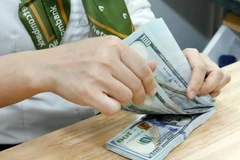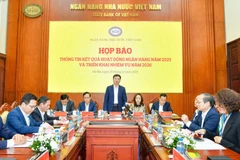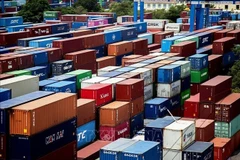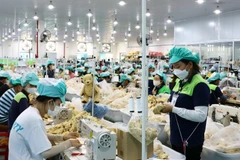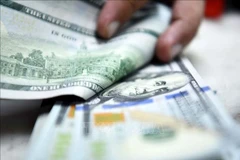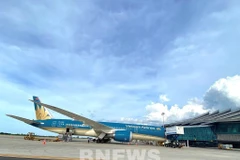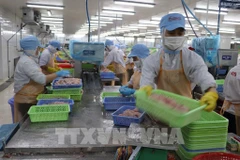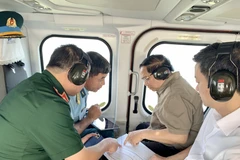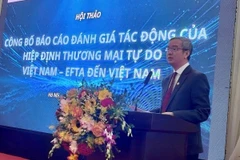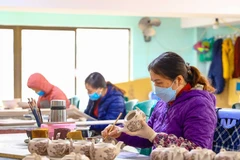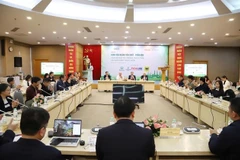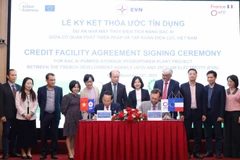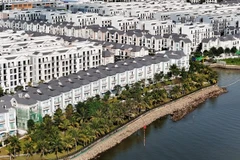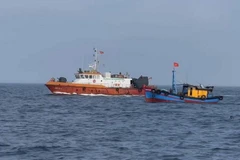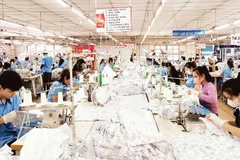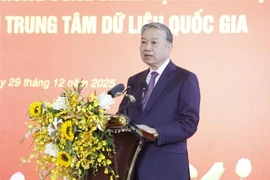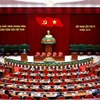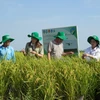Tianjin (VNA) – Prime Minister Pham Minh Chinh had meetings with leading corporations of China on June 24 to discuss advancing cooperation with Vietnam in infrastructure development, finance, trade, and investment.
The event took place as part of his working trip to China, during which he attends the 16th Annual Meeting on the New Champions of the World Economic Forum (WEF) in Tianjin (WEF Tianjin).
Talking to the Vietnamese leader, Chairman of the Bank of China (BOC) Ge Haijiao said BOC opened a branch in Vietnam in 1995 – the first of a Chinese bank to be licensed in the country, and it is running productively. BOC wishes to boost its presence and investment in the Vietnamese market, and is ready to provide comprehensive financial services for large infrastructure projects.
PM Chinh applauded BOC’s operations which, he said, have contributed to local socio-economic development.
He asked the bank to continue expanding operations in Vietnam, help promote financial and monetary cooperation between the two countries, and supply concessional and large capital for priority fields in Vietnam. He suggested it share experience as Vietnam is drafting a financial centre development plan.
The PM recommended that BOC cooperate with not only the public sector but also the private sector of Vietnam, and participate in handling poor-performing banks. He affirmed that the Vietnamese Government will accompany and create favourable conditions for foreign enterprises, including Chinese ones like BOC, to invest and do business effectively, successfully, and sustainably.
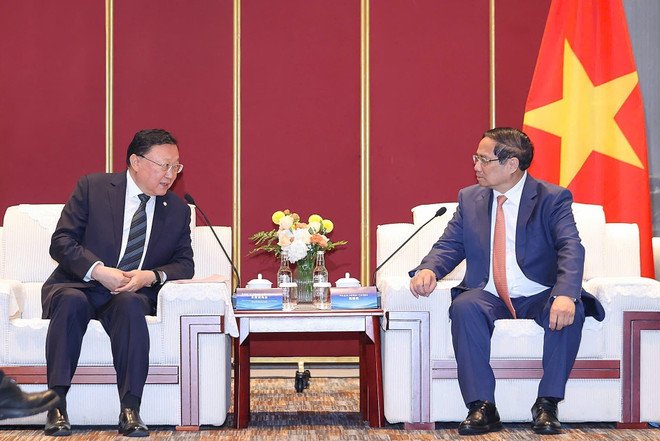
At the meeting with Chairman of the China Communications Construction Company (CCCC) Wang Tongzhou and senior leaders of the firm – a world’s leading business in infrastructure development present in Vietnam for over 30 years, PM Chinh highly valued CCCC’s fruitful operations in the country, particularly in developing infrastructure, including railway systems.
Wang said his company wishes to continue engaging in key infrastructure projects in Vietnam such as the Lao Cai – Hanoi – Hai Phong railway, the North – South high-speed railway, metro lines in Hanoi and Ho Chi Minh City, seaports like Lach Huyen and Can Tho, as well as expressway and offshore wind power projects.
PM Chinh welcomed CCCC’s interest and plans to expand cooperation in Vietnam, affirming the Vietnamese Government’s consistent policy of encouraging the development of railway infrastructure technology and promoting technological self-reliance in the sector.
He suggested that CCCC explore potential collaboration with the Vietnam Railways Corporation, as well as with the railway management boards of Hanoi and Ho Chi Minh City. In particular, he proposed that the company consider public-private partnership (PPP) models in Vietnam.
Also on June 24, PM Chinh held a working session with Chen Wenjian, Chairman of China Railway Engineering Corporation (CREC), and senior leaders of the group.
Chen highlighted CREC’s position as one of the world’s largest construction contractors, with projects accounting for over two-thirds of China’s total railway mileage. In Vietnam, CREC has been operating since 2005, engaging in major projects such as the Dung Quat shipbuilding plant, the modernisation of signalling systems along the Vinh–Saigon rail route, the Hanoi urban railway, and wind power projects. The company’s total value of awarded contracts in Vietnam has reached around 1 billion USD.
CREC hopes to further contribute to infrastructure development in Vietnam, Chen said, proposing the consideration of investment cooperation models applicable to railway and urban transport projects in Hanoi and Ho Chi Minh City.
PM Chinh welcomed the Chinese enterprise's plans to invest and do business in Vietnam and appreciated CREC’s interest in railway and metro development. He provided an overview of Vietnam’s infrastructure development strategy and ongoing railway projects, expressing hope that CREC will build on past cooperation and continue its investment in Vietnam.
He particularly encouraged CREC to participate in railway projects linking Vietnam and China, such as the Hai Phong – Hanoi – Lao Cai, Dong Dang – Hanoi, and Hai Phong – Mong Cai lines, as well as in the North – South high-speed railway. In the near future, the PM urged CREC to work closely with relevant Vietnamese authorities to promptly conclude and implement specific cooperative projects.
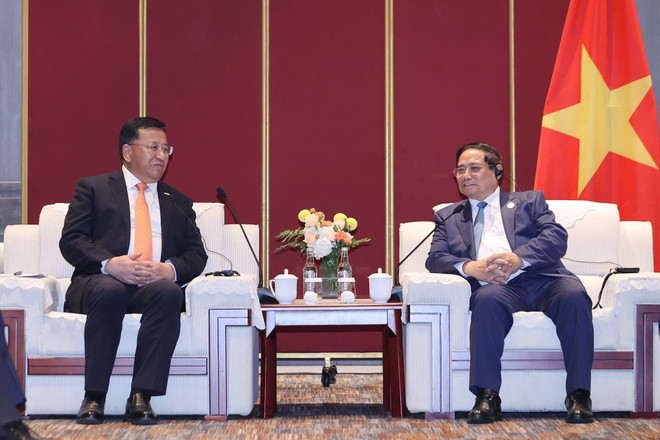
During a working session the same day with Dai Hegen, Chairman of China Railway Construction Corporation (CRCC), one of the world’s leading and most comprehensive construction conglomerates, PM Chinh stated that he just had very successful talks with his Chinese counterpart Li Qiang, during which both sides agreed to accelerate the implementation of railway projects connecting the two countries.
The leader informed the CRCC delegation that Vietnam is urgently carrying out the necessary preparations to begin construction of the Hai Phong – Hanoi – Lao Cai rail line by the end of 2025. He urged CRCC to work closely and swiftly with relevant Vietnamese agencies to join the project at the earliest.
Alongside this, CRCC was also asked to consider cooperation activities such as providing financial and technical support for pilot projects; transferring railway technology; cooperating in research and human resources training; and giving support in terms of management models, policies, legal regulations, and financial mechanisms for infrastructure development, particularly for Vietnam’s railway sector.
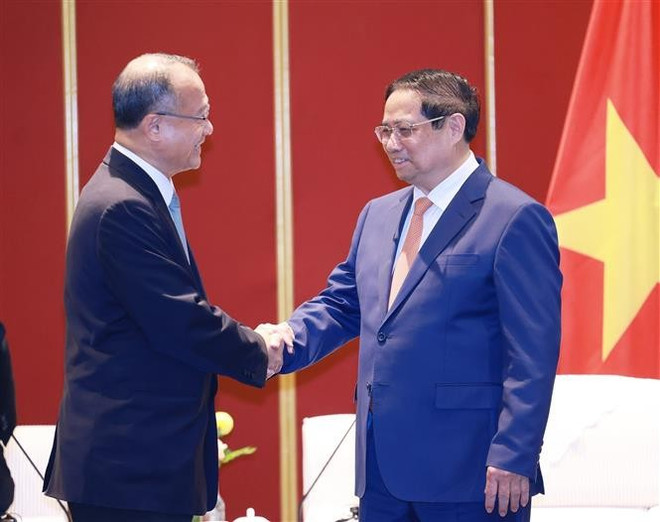
The same day, PM Chinh received Jonathan Choi, Chairman of the Hong Kong-based Sunwah Group and Chairman of VinaCapital Vietnam. He spoke highly of the group’s business performance in Vietnam and welcomed its investment expansion plan.
He encouraged the group to invest in high-tech industries, green development, circular economy, and social housing. He also called for increased investment in raw material zones, science and technology, and deep processing in the agricultural sector.
The PM asked the group to help Vietnamese companies integrate into its supply chain and contribute to high-quality human resources training in Vietnam.
In the evening, PM Chinh received Professor Tao Yitao, Director of the China Special Economic Zone Research Centre and President of the Belt and Road Research Institute for International Cooperation and Development at Shenzhen University.
Expressing her gratitude to the PM for making time for the meeting despite his busy schedule, Tao expressed confidence that the PM's visit to China will provide strong momentum for bilateral cooperation in various fields.
She shared that she is working with China’s border provinces to coordinate with Vietnamese provinces in developing cross-border economic zones.
Acknowledging Tao’s contributions to researching and proposing special economic zone models in China, PM Chinh highlighted his long-standing interest in establishing joint cross-border economic zones, dating back to his tenure as Party Secretary of Quang Ninh province. He noted that he has assigned Lao Cai and Quang Ninh provinces to work with their Chinese counterparts to consider developing such zones.
The PM suggested the professor continue studying and proposing a joint cross-border economic zone model suitable to the current context, the size of the two economies, and bilateral relations, while aligning with development trends and priority sectors.
Agreeing to consider the professor’s proposals to hold an international forum on special economic zones in Vietnam, establish a joint research institute, and build a Vietnam – China cultural centre for academic and cultural exchanges, the PM said he will assign relevant ministries and localities to work with the Chinese side.
The leader also expressed his hope that Tao will advise Vietnam on economic development models to help the country achieve 8% growth in 2025 and double-digit growth in the following year in pursuit of its centennial goals./.
